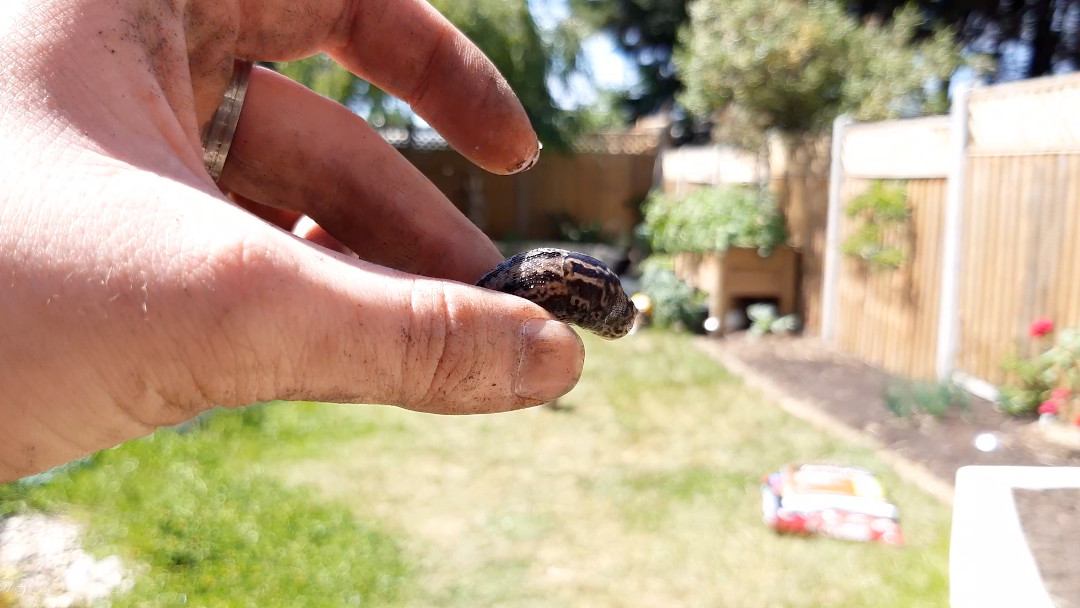Spinach
Mix into your salad for a vitamin kick
I won’t do the standard “Popeye” gag here but spinach is packed full of essential vitamins and fibre. It’s simple to grow and mixes well with salad leaves to embellish most dishes.
Our bearded dragon also loves spinach so we treat him every so often which saves us some money.
Like lettuce leaves, you can grow them in pretty much anything, so long as you have a little space and some soil.
This is a week by week diary of the growing, maintenance and harvesting spinach.
Quick tips
- Sow 3-4 seeds into each module of a seedling tray
- Grows well for most of the year
- Seeds can be sown from March → August directly outdoors
- Can be grown in part shade
Dates
To grow spinach through the summer,use the following dates:
| Jan | Feb | Mar | Apr | May | Jun | Jul | Aug | Sep | Oct | Nov | Dec | |
|---|---|---|---|---|---|---|---|---|---|---|---|---|
| Sow | O | O | O | O | O | O | ||||||
| Harvest | H | H | H | H | H | H |
Pests
Spinach are susceptible to the following pests:
Types of spinach
We are growing “Monnopa” spinach this year which we received for free with our subscription to Grow You Own magazine, which is worth the price for the free seeds alone. They can also be found here from Thompson & Morgan
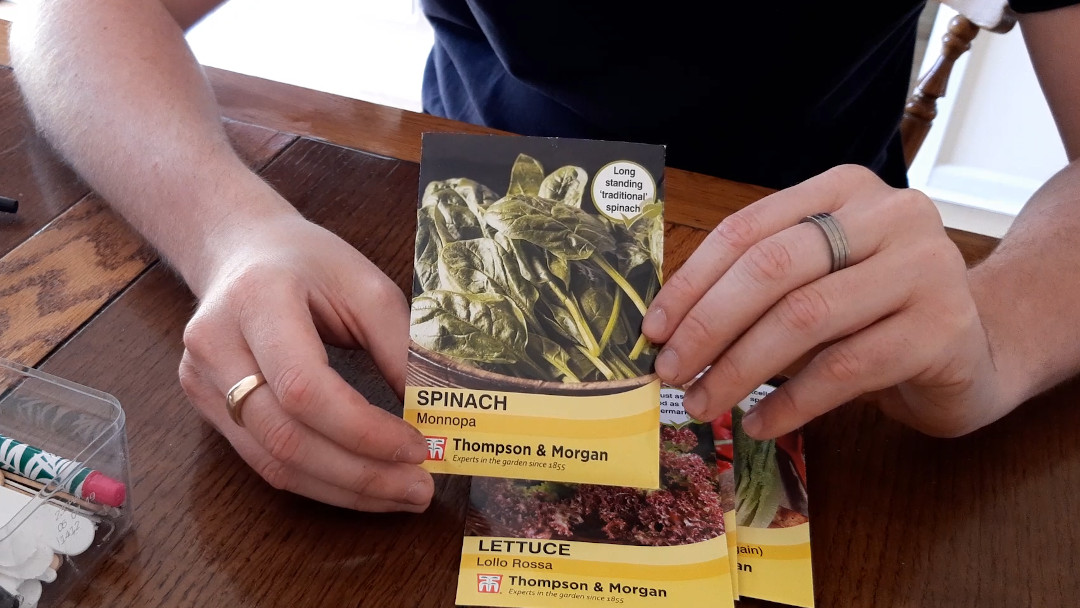
Watch it
I have compiled the growing diary for spinach into a short video for you:
Growing diary
I started this diary, and sowed these seeds, on the first week of May (19th week of the year).
Week 1: Sowing
Sowing spinach seeds is similar to many other leafy greens. First start by filling your chosen seed tray (I’m using the 84 cell tray as I’ll be sowing other veg at the same time) with a seed, or general, compost. You don’t need to press too firmly, the seedlings will have an easier time pushing down their roots if it’s a little fluffy. Make sure each module is full though and there aren’t any large air pockets.
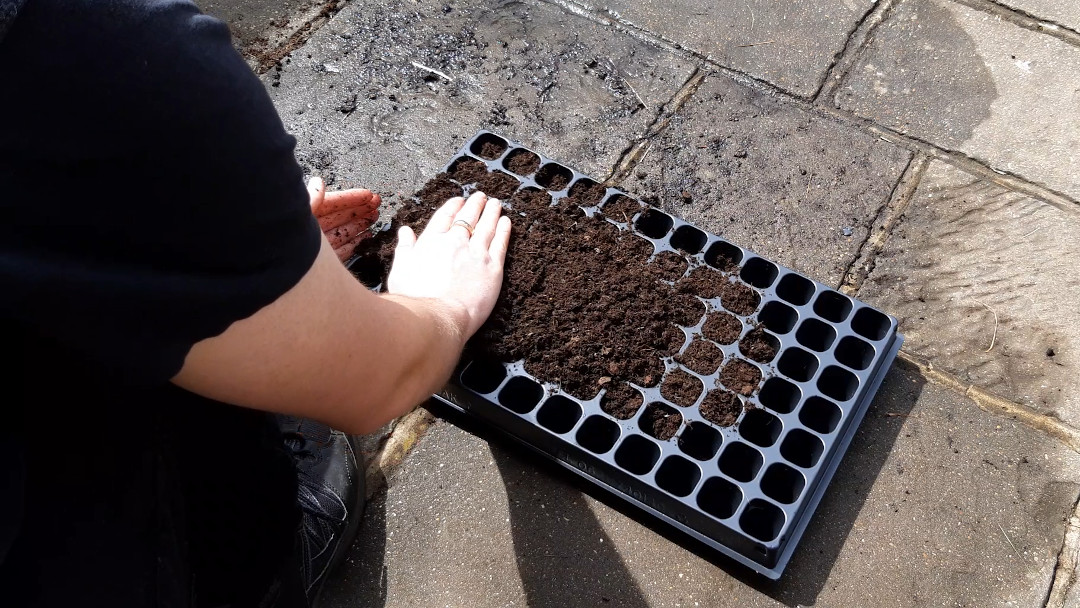
Next, water thoroughly or sit the tray in water to allow the compost to soak up as much water as possible. This will ensure the seedlings have a good starting drink of water to get them going and will mean the compost wont dry out too quickly.

As you get so many seeds in each packet, for best results with germination, I would recommend sowing 3-4 seeds per cell. We will thin out the smallest seedlings later.

Sprinkle a little compost over the seeds, patting down gently and making sure the seeds are covered. Lastly, give them a splash of water.

Put your label in place so you remember what you have planted.
Tip: Instead of writing a label for each column of your seed tray, write two and put them in the outermost columns that you used. If you always do this, you know that everything between the labels is the same.
If you’re getting your seedlings going indoors, put this on a sunny windowsill. If, like me, you’re growing in a grow tent (which I would recommend) then this tray can go near the bottom as the seedlings don’t need any light yet.
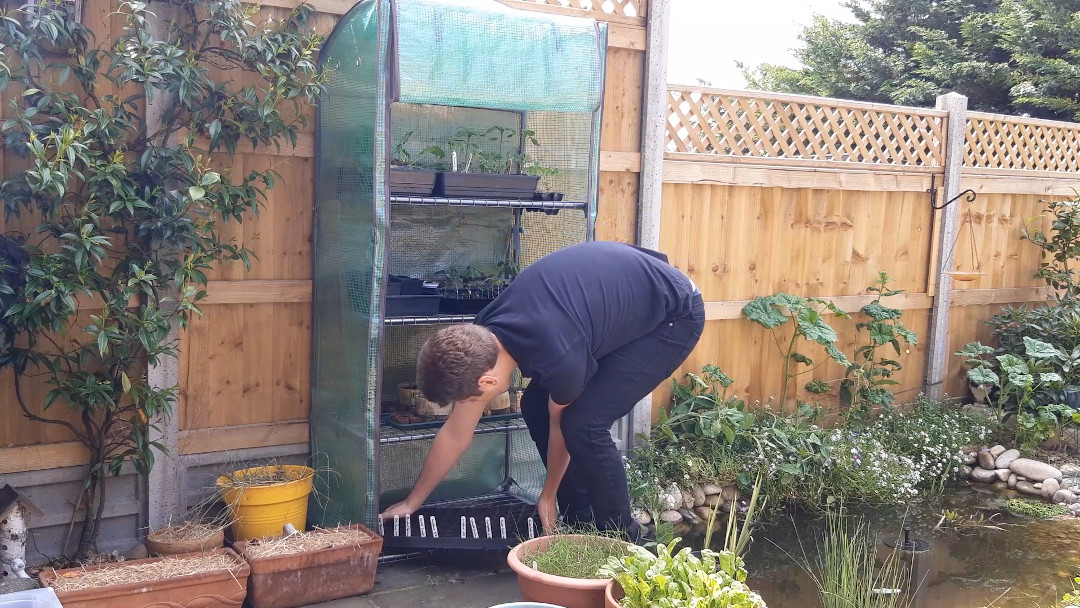
Week 2: Starting to germinate
Spinach takes between 5-7 days to germinate and I already have a few little seedlings pushing their heads out of the compost. I expect more to come along as the week progresses.
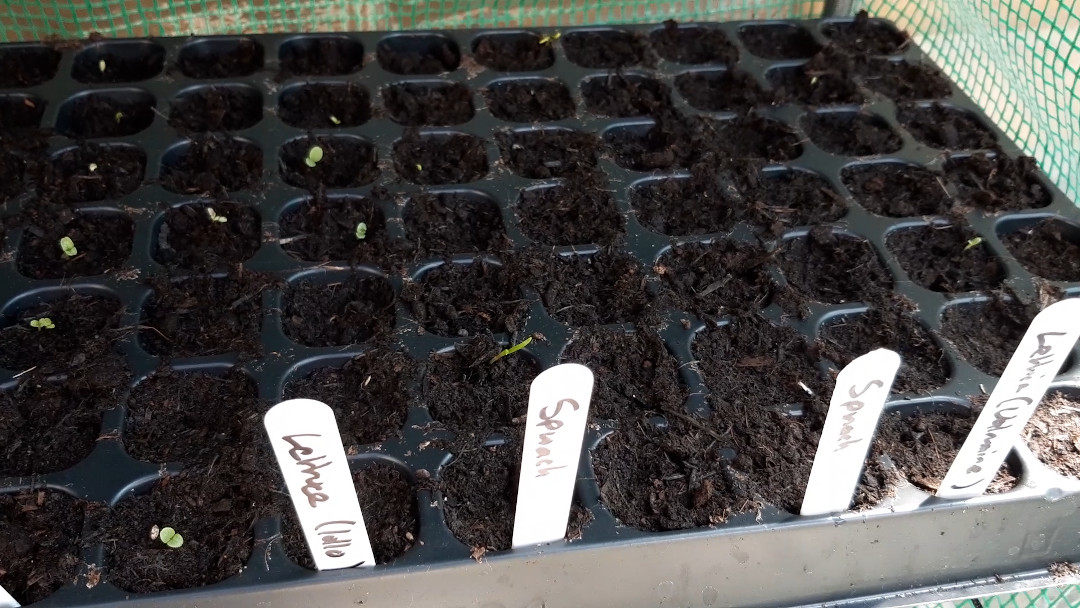
Week 3: Good germination
Week 3 is showing a good germination across most cells. The seedlings are a little leggy but that can be fixed and was caused by a few very hot days. To keep them from stretching any further, the tray will be elevated to the highest level in the growhouse and turned every few days.

Week 4: Happy seedlings
Moving and turning the seedlings certainly helped but they are still looking a little leggy. No matter, they are ready to be transplanted and will strengthen up once in their forever home.

Spinach will be happy in small pots, large pots, window boxes or straight in the ground and can also tolerate part shade, which makes the location options huge. I have recently put a new window box up outside our kitchen, where they will be safer from pests and easier for me to harvest.
Fill container with soil
I’m using my 1:1 mix of topsoil and compost for the potting soil. For more information, please check my post on soil.
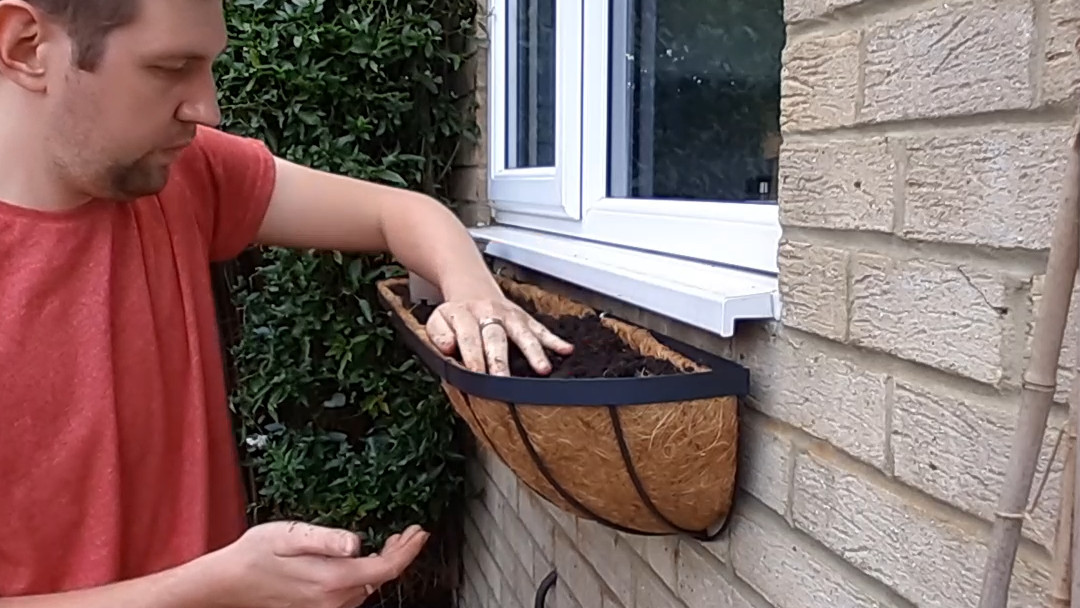
Press the soil down and give it a little water to keep the soil together while transplanting.
Make the holes
I think a dibber is my favourite tool. If you don’t have one you can make your own from a pole or old tool handle. It makes transplanting SO much easier. Make a two inch deep hole for each seedling.
If you have a dibber, the lines on it are spaced an inch apart for reference

Ease pods from cell
Using the flat end of a pencil, poke out the pod from the cell using the hole in the bottom. If this is a little tricky, water the soil first so it holds together.

Transplant
Place each pod into each hole and press down so the top of the cell is flush with the top of the soil. Place your fingers either side of the stem and gently push down.

Water
Lastly, give them a really good water. Transplanted seedlings can get shocked by being moved and their roots disturbed. We limit this by using a similar soil in both the tray and the pot and by watering the roots in well after moving them.
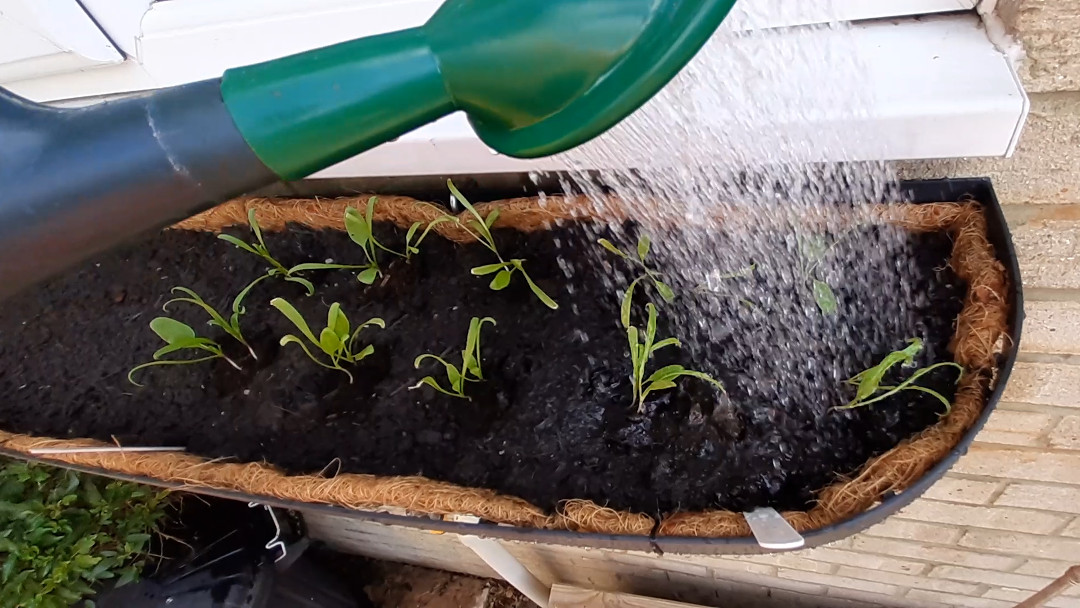
Week 5: Doubled in size
I update these diaries every Monday morning and at first glance, I’m often thinking to myself: “Is anyone going to find this interesting, they haven’t changed since last week”.
That’s until I compare the photos. The spinach has easily doubled in size in just one week.
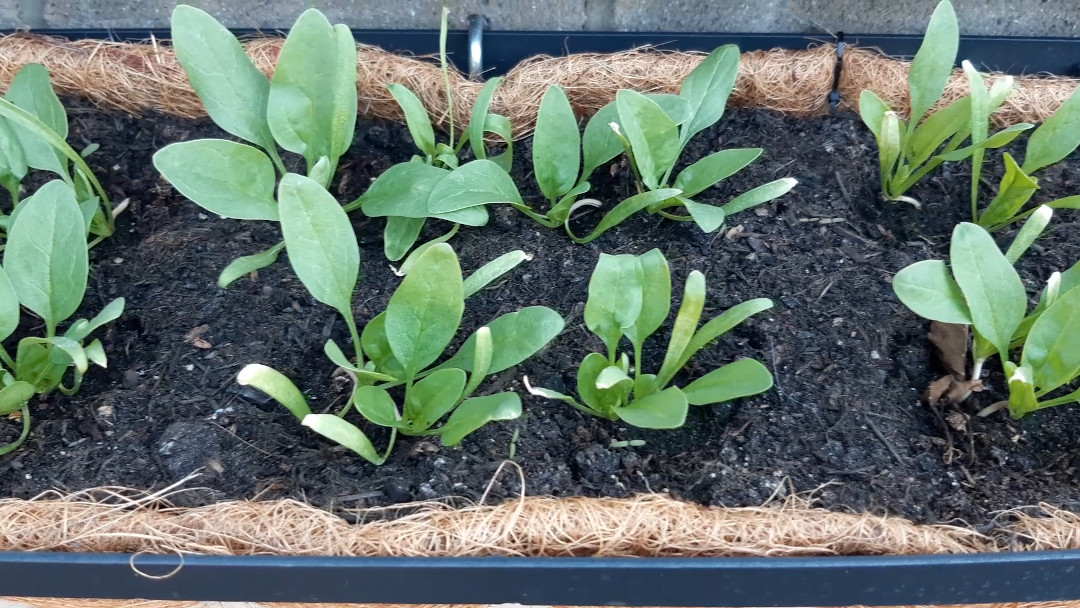
I’m keeping it well watered as this is a very warm spot in the garden and I’m not sure how quickly these new hanging boxes dry out.
So far, no pests.
Week 6: Enjoyed a little rain
After 2-3 weeks of gorgeous sunshine, the spinach looks to be enjoying a few days of rain.
The leaves are a healthy green and it’s look very thick, compared to another spinach we have which has already bolted (due to getting too hot and a little dry).
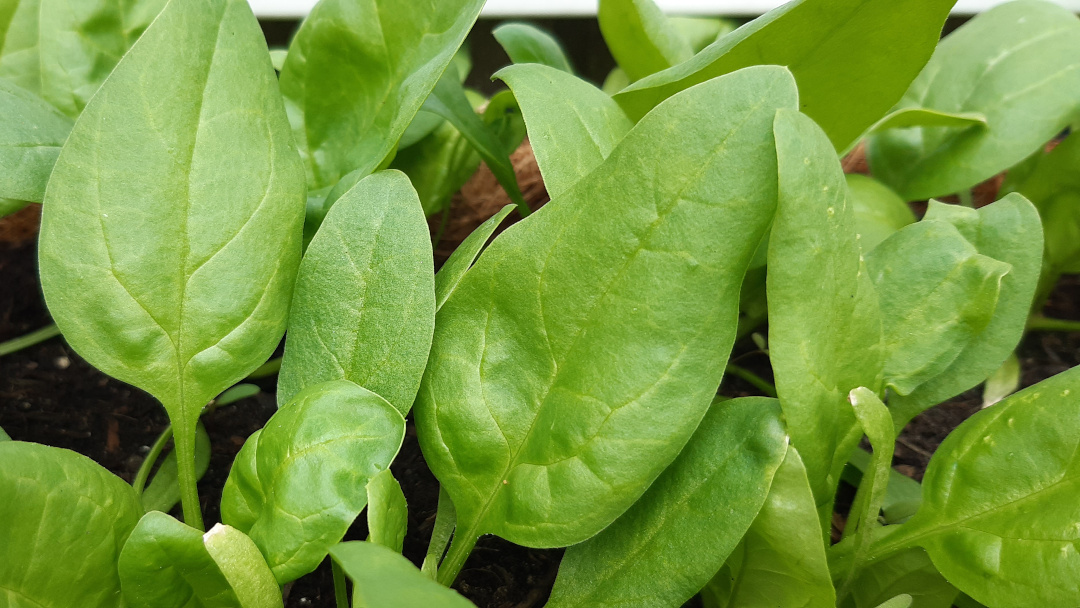
Keep well watered and pick out any emerging weeds.
It’s also the right size for pests to become interested. Keep an eye out for the clear signs of slug & snail damage (holes in leaves, silvery trails etc).
Harvesting
After seven weeks we have a good amount of strong, thick, healthy leaves.
This is now ready to start harvesting.

When taking the leaves, cut the largest/tallest leaf at its base, being careful not to damage the rest of the plant.
We take the largest leaf so that:
- It allows more light in, so the plant can continue growing
- We need to harvest fewer leaves which is better for the longevity of the plant
- It keeps the plant compact and easy to manage
As the spinach took a couple of months to grow, it’s worth sowing some more now so they are ready for when you want to replace this spinach.
Article written on May 11, 2020
Updated Jun 15, 2020

